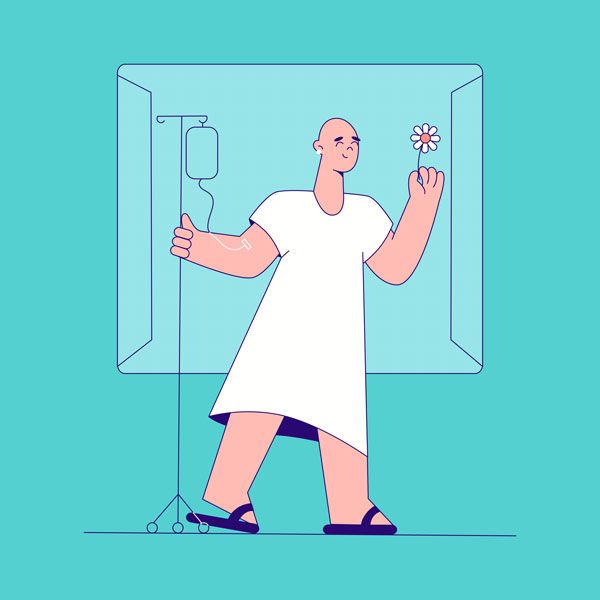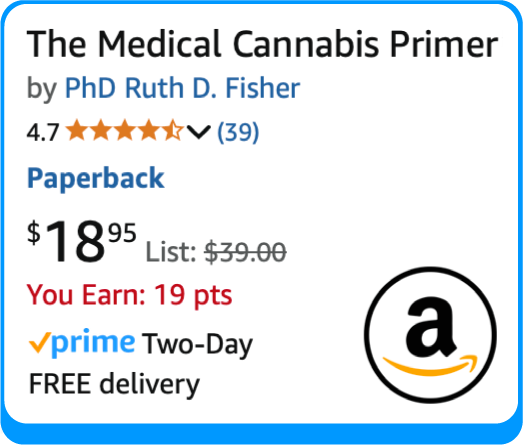Blogs
Cannabis and Cancer: Studies Show…
Ruth Fisher

1. Cannabinoid receptors and neurotransmitters are upregulated in tumor tissue.[1], [2]
Studies show that cancer cells contain more cannabinoid receptors and endocannabinoids. In other words, tumors are sensitive to (one might even say our bodies are looking for) cannabinoids.
2. Cannabis addresses both cancer causes as well as its symptoms.
-
Cannabis not only hinders the growth and metastasis of tumors, but it has been shown to actually shrink tumors.[1], [3]
Studies show cannabis prevents cancer cells from multiplying and spreading, it prevents the formation of new blood vessels to nourish cancer cells, and it induces cell death in cancer cells.
-
Cannabis helps decrease nausea, increase appetite, and decrease pain in cancer patients.[4], [5]
“Cannabinoids… may exert palliative effects in cancer patients by preventing nausea, vomiting, and pain and by stimulating appetite.”[5]
3. Cancer is heterogeneous.[4], [1]
Each instance of cancer is unique, and will therefore respond differently to treatments.
4. Cannabis used in whole plant form works best for treating cancer.[3]
There is a complex interaction between different cannabinoids, terpenes, and cancer cells. Cancer patients will respond best when treated using a combination of different cannabinoids
5. Cannabis works best for treating cancer when used in tandem with radiation therapy.[5], [6]
Radiation therapy can be effective at killing cancer cells, but it also kills healthy cells. Cannabis enhances the effects of radiation therapy. So, when cannabis is used in combination with radiation therapy, lower doses of radiation can be used to effectively kill the cancer cells, which means the radiation will kill fewer healthy cells in the process. At the same time, cannabis can help address the pain and nausea associated with the radiation.
6. Cannabis works best for treating cancer when delivery is highly targeted.[5], [7]
To minimize the potential for unwanted (e.g. psychoactive) side effects, cannabis should be administered using targeted delivery methods, such as nanoparticle drones or smart delivery systems. Targeted delivery systems to cancer cells will “boost damage to the tumor cells and inhibit growth while minimizing the side effects…”[7]
7. Cannabis dosing levels matter when used to treat cancer.[2], [6]
Studies have shown the ability of cannabis to treat cancer, but studies have also shown the ability of cannabis to promote cancer:
"Many cannabinoids … have shown ability to inhibit proliferation, metastasis, and angiogenesis in a variety of models of cancer. On the other hand, there are reports that have indicated that under certain circumstances, cannabinoids can be protumorigenic.”[2]
The level of cannabinoids dosed determine whether cannabis promotes cancer growth (low doses) or inhibits it (high doses):
"Whereas low cannabinoid concentrations (<10 uM) increase tumor progression, high concentrations (>10 uM) reduce cancer cell proliferation."[6]
References:
[1] Barbara Dariš, Mojca Tancer Verboten, Željko Knez, Polonca Ferk (2018, Sep). Cannabinoids in cancer treatment: Therapeutic potential and legislation. Bosnian Journal of Basic Medical Sciences. Retrieved from https://www.researchgate.net/publication/327391709
[2] Paweł Śledziński, Joanna Zeyland, Ryszard Słomski & Agnieszka Nowak (2018). The current state and future perspectives of cannabinoids in cancer biology. Cancer Medicine. Retrieved from https://onlinelibrary.wiley.com/doi/epdf/10.1002/cam4.1312
[3] Rameshprabu Nallathambi, Moran Mazuz, Dvory Namdar, Michal Shik, Diana Namintzer, Ajjampura C. Vinayaka, Aurel Ion, Adi Faigenboim, Ahmad Nasser, Ido Laish, Fred M. Konikoff, and Hinanit Koltai (2018). Identification of Synergistic Interaction Between Cannabis-Derived Compounds for Cytotoxic Activity in Colorectal Cancer Cell Lines and Colon Polyps That Induces Apoptosis-Related Cell Death and Distinct Gene Expression. Cannabis and Cannabinoid Research. Retrieved from https://www.ncbi.nlm.nih.gov/pmc/articles/PMC6038055/pdf/can.2018.0010.pdf
[4] Safikur Rahman, Ayyagari Archana, Durgashree Dutta, Vijay Kumar, Jihoe Kim, Arif Tasleem Jan, Rinki Minakshi (2019, Jan). The onus of cannabinoids in interrupting the molecular odyssey of breast cancer: A critical perspective on UPRER and beyond. Saudi Pharmaceutical Journal.
[5] Wilfred Ngwa, Rajiv Kumar, Michele Moreau, Raymond Dabney and Allen Herman (2017, Sep). Nanoparticle Drones to target Lung cancer with radiosensitizers and cannabinoids. Frontiers in Oncology. Retrieved from https://www.frontiersin.org/articles/10.3389/fonc.2017.00208/full
[6] Daniel A. Ladin, Eman Soliman, LaToya Griffin and Rukiyah Van Dross (2016, Oct). Preclinical and Clinical Assessment of Cannabinoids as Anti-Cancer Agents. Frontiers in Pharmacology. Retrieved from https://www.ncbi.nlm.nih.gov/pmc/articles/PMC5054289/pdf/fphar-07-00361.pdf
[7] Sayeda Yasmin-Karim, Michele Moreau, Romy Mueller, Neeharika Sinha, Raymond Dabney, Allen Herman and Wilfred Ngwa (2018, Apr). Enhancing the Therapeutic efficacy of cancer Treatment With cannabinoids. Frontiers in Oncology. Retrieved from https://www.frontiersin.org/articles/10.3389/fonc.2018.00114/full

